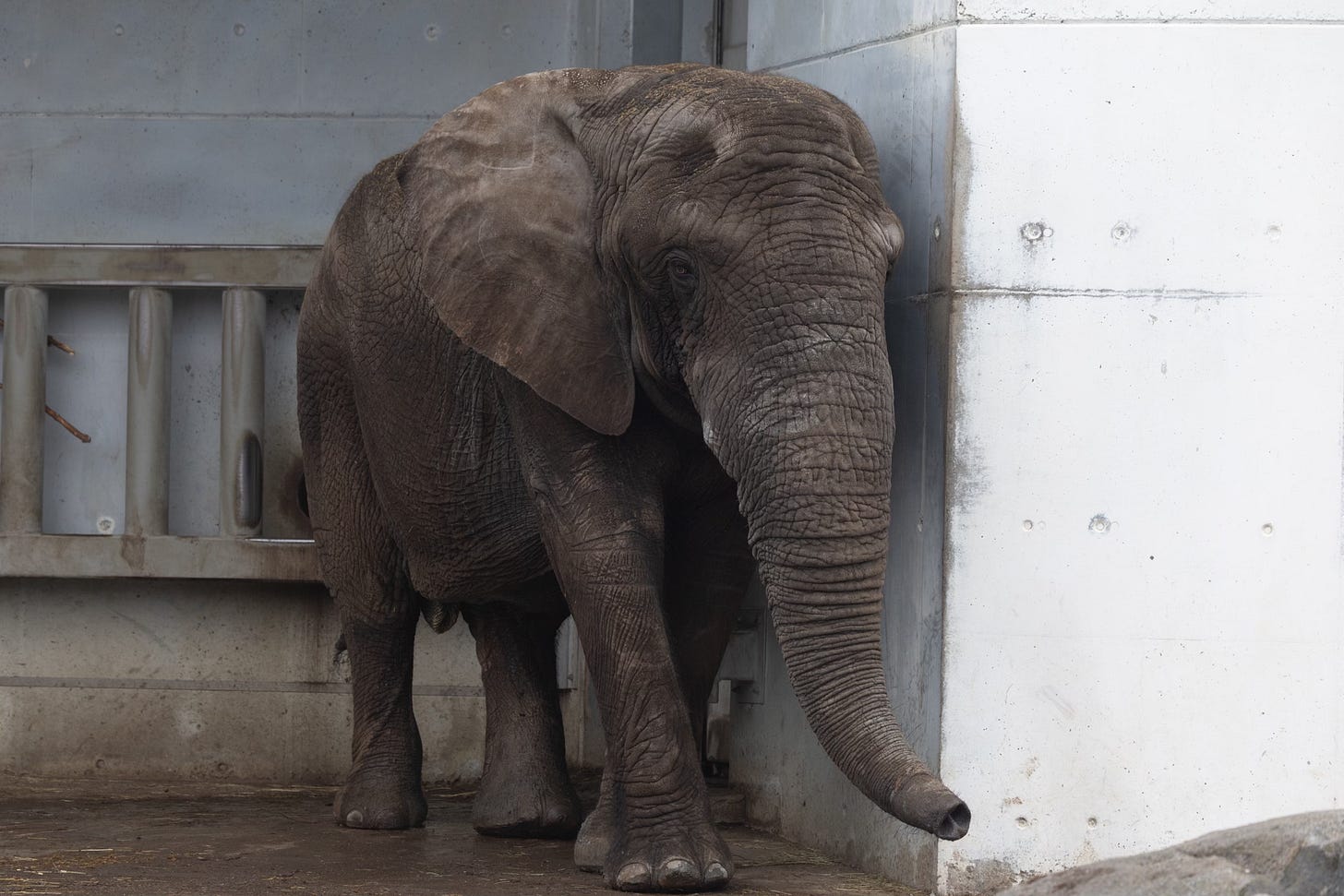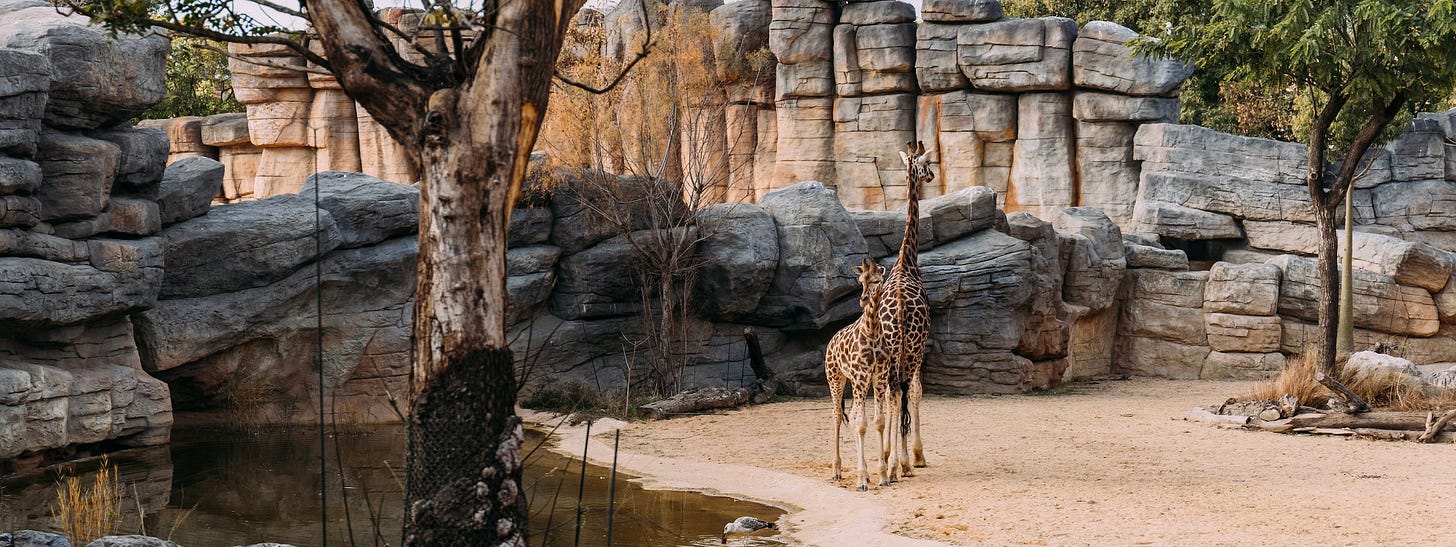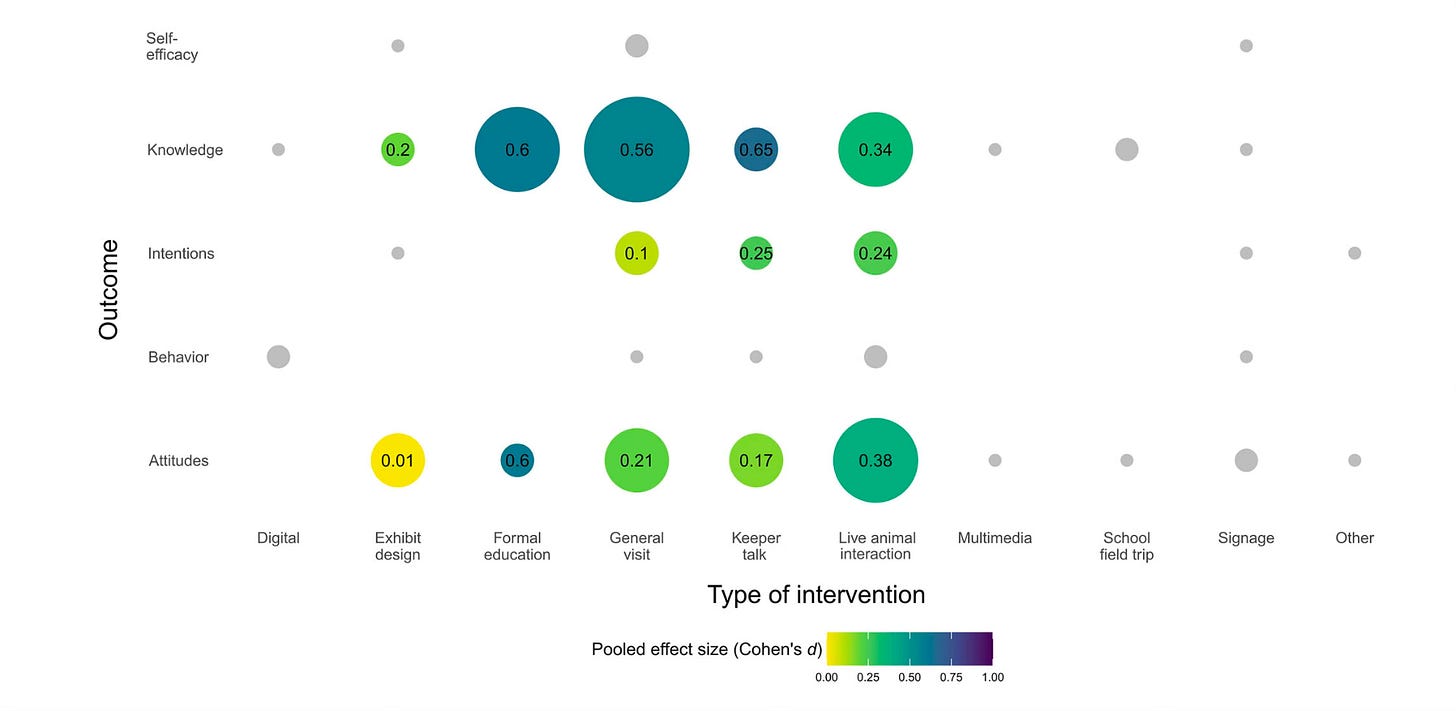The zoo paradox 🦓
Plus, paralyzing a romantic partner to avoid a deadly bite
By Dan Fletcher
Here’s this Wednesday’s audio edition.
Zoos are a tricky topic for me. I haven't figured out completely where I stand on them, and that's in part because it's tough to generalize — some zoos are better than others; some animals just do better in zoos than others.
As I meet other people interested in conservation, it's always a subject I tiptoe around. Some of the most passionate wildlife advocates I meet in the field are firmly anti-zoo, and I understand why. When you've spent days tracking a lynx through Estonia's frozen forests or waiting for a tiger to appear in Nepal's jungles, trying to minimize your impact on these animals' lives, seeing them in enclosures can feel wrong.
If I'm being honest though, I like going to the zoo — there's still a joy in actually seeing the animals you've spent so much time reading and writing about, even if it's not in their natural habitat. And most people can't spend weeks tracking animals in the wild. They can't afford the time, the travel costs, or the expertise needed to find these increasingly rare creatures in their natural homes. Earlier this month, when I didn't nab a glimpse a manul in Mongolia despite our best efforts, my first stop afterward was the Tallinn Zoo, because I knew I could at least see Mars:
A February study in Conservation Biology suggests I'm not alone in finding value in these encounters. The research shows that zoos, when done right, can be a meaningful force for conservation education.
Researchers analyzed 56 different studies covering everything from brief animal encounters to formal education programs at zoos and aquariums around the world. The findings? Zoo visits reliably increased visitors' knowledge about conservation issues, improved their attitudes toward protecting wildlife, and — most importantly — made them more likely to take action to help endangered species.
It's a meaningful effect too. The researchers found that engaging with zoos had what they called a "small to medium" positive impact on conservation attitudes and behaviors (technically, a Cohen's d of 0.40 for the statistical nerds among us). That might not sound huge, but in behavioral science, even small shifts in human behavior are notoriously hard to achieve. The fact that simply visiting a zoo can measurably shift how people think and act about conservation is remarkable.
What's particularly interesting is how different types of zoo experiences affect visitors. Formal education programs and keeper talks showed some of the strongest effects on visitor knowledge, while live animal demonstrations were particularly good at shifting attitudes about conservation. Even just general visits without any special programming had meaningful impacts. Digital exhibits and basic signage, on the other hand, didn't seem to move the needle much.
This makes intuitive sense — the more engaging and interactive the experience, the more likely it is to leave a lasting impression. And it's encouraging that even basic zoo visits without bells and whistles can help people connect with conservation issues.
This matters because zoos often face pressure to prove they're more than just entertainment, or even that they’re a valid form of entertainment. While they play a crucial role in protecting endangered species through breeding programs and research, their ability to change public attitudes about conservation is equally important — especially as we face mounting biodiversity challenges globally.
There are important caveats to consider though. The study was heavily skewed toward Western institutions — 21 studies from the United States, 11 from the United Kingdom, and 8 from Australia. Only two studies looked at zoos in Asia, despite the region being home to some of the world's busiest and most controversial facilities. This matters because approaches to animal welfare and conservation education can differ dramatically between cultures. What works in a New York zoo might not translate to one in China or India.

The researchers found that most zoos are already doing a good job at teaching basic facts about animals and conservation issues. But there's room for improvement in helping visitors build confidence in their ability to take meaningful conservation action. For instance, while people often leave the zoo knowing more about endangered species, they don't always feel equipped to do something about it.
Perhaps that's the real value of zoos in our increasingly urban world — they're not just teaching facilities or entertainment venues, but bridges between people and wildlife. Not everyone can track a snow leopard through the Himalayas or watch wild tigers in India. But a well-run zoo can spark that first connection to wildlife, that initial realization that these creatures are worth protecting. And now, at least, there’s data to suggest that works.
Quick links!🔗
Scientists discovered that male blue-lined octopuses have developed a rather extreme approach to avoiding death-by-dating — they temporarily paralyze their (much larger) potential mates before getting intimate. It's actually a clever survival strategy: female octopuses are notorious for eating their partners after mating. So the males deliver a carefully measured bite containing the same toxin found in pufferfish, leaving females immobile just long enough to complete the deed and make a hasty retreat. All the females in the study recovered fully and went on to lay eggs, though they were probably left with some strong questions about a second date. 🐙
Republican lawmakers are asking the Trump administration to stop a plan to shoot barred owls in order to save spotted owls on the West Coast, citing it as too expensive. While the Department of the Interior hasn’t given a cost estimate for the plan, the program plans to remove a lot of birds — nearly 15,500 each year beginning in 2027. Barred owls are native to the east coast, but hopscotched their way west on trees planted on the planes, where now they’re displacing the much rarer northern spotted owl. While the removal angers some wildlife advocates, removing barred owls aided the spotted owl’s recovery in several experiments. 🦉







Good analysis on zoos
Great read again! + lovely picture of mars 🥹😭